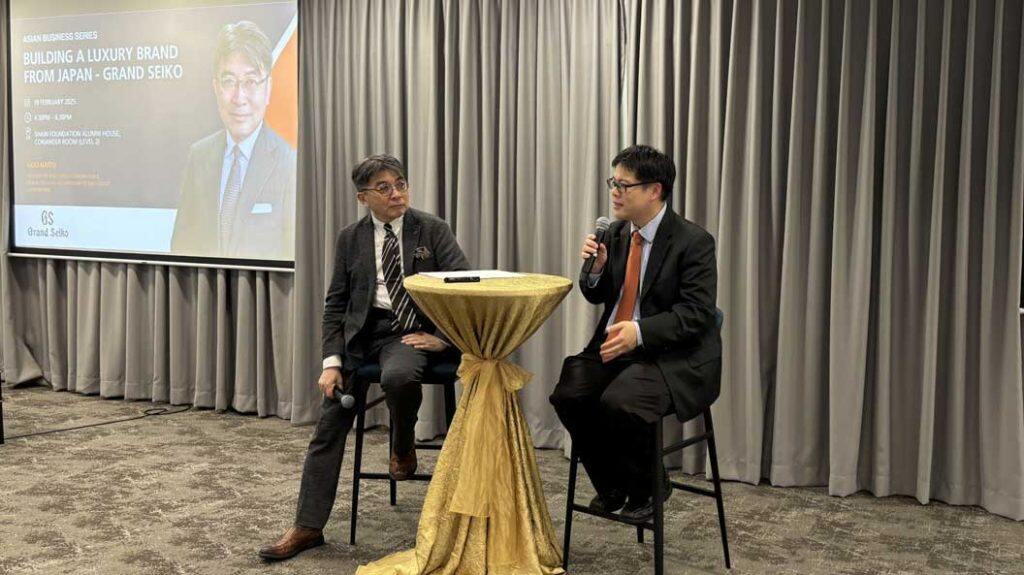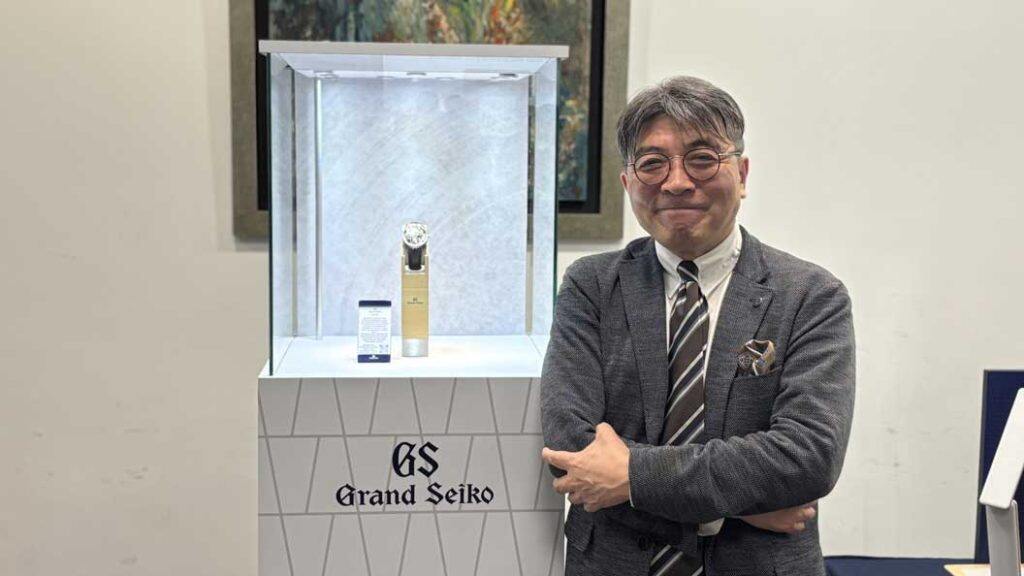

Every brand has a story, and sometimes, it is just that – a story. But in the luxury market, a good brand story is key to winning over wealthy and discerning customers, especially as a newcomer competing against established brands.
At an event hosted by the NUS Business School and the JY Pillay Comparative Asia Research Centre under NUS Global Asia Institute on 19 February 2025, Mr Akio Naito, President of Seiko Watch Corporation and Senior Executive Vice President of Seiko Group Corporation, shared with about 100 attendees how brand storytelling helped the Japanese watchmaker to successfully break into the global luxury watch market, long dominated by Swiss watchmakers with loyal followings.
The event titled “Building a Luxury Brand from Japan – Grand Seiko” was part of the Asian Business Series by the Strategic Relations office of the NUS Business School, which invites senior executives from various industries to share insights on topics ranging from macroeconomics to business trends and global issues. About 30 such events have taken place since the series began in 2016, featuring top corporate leaders from local and international businesses including DBS, YouTrip, Google, Cartier, McKinsey & Company, and Disney.
As a key executive who oversaw Grand Seiko’s global expansion, Mr Naito was an ideal speaker who could inspire the NUS community with the story of how an Asian brand can succeed in the global market, said Associate Professor Joel Goh, Director of the JY Pillay Comparative Asia Research Centre.
“What was intriguing to us about Grand Seiko as a brand is how it has managed to carve a place for itself amidst this very challenging environment,” he said. “Moreover, it has done far more than just to ‘survive,’ but instead, has thrived by developing a unique branding approach and global growth strategy.”
Refocus on culture and heritage
Grand Seiko made its global debut in 2010 but struggled for several years to make headway in the US, its first major market outside of Japan. Mr Naito, who was placed in charge of the global expansion in 2016, realised that a different approach was needed to rise above the commodity segment, where the parent brand Seiko was known for affordable wristwatches, and move into the luxury segment where Grand Seiko could compete against the top Swiss watch brands.
“In commodity products, consumers compare different products on the basis of their functional value and pricing, so that cost or monetary value of the product is the element on which consumers make their purchasing choices,” said Mr Naito.
“On the other hand, in the luxury category, what is important is a brand story or signature story that emphasises the people behind the brand, the place where the brand was born and nurtured, and the history of the brand. Fans won’t really compare their favourite brand against other brands on the basis of function or pricing.”


In 2018, the group established a company to handle Grand Seiko products exclusively, positioning Grand Seiko as a distinct brand and shifting the marketing focus away from the functional value of qualities like ease of use, durability, accuracy, and legibility to the emotional value of the history and heritage behind the product.
The decision paid off and while the brand does not disclose numbers, the group saw “significant and rapid expansion of Grand Seiko sales outside of Japan” from 2018, Mr Naito said.
Since 2019, it has been cultivating a brand philosophy called “The Nature of Time,” which emphasises both the essence of watchmaking and the Japanese forests, mountains, and lakes that surround its watchmaking studios and inspire Grand Seiko’s watch designs.
Grand Seiko’s Japanese heritage also figures large in its next phase of expansion as it looks to reach a broader market beyond traditional watch enthusiasts. Seiko has created videos showcasing Japanese culture, such as a five-minute video capturing the soundscape of modern Tokyo and a longer film called “The Gift of Time” that demonstrates the concept of time in the context of Japanese culture and tradition.
“We are targeting those customers who may be interested in Japan but not necessarily the watch world, drawing the interest of especially the young audience to see this interesting movie,” Mr Naito said. “This is the upper funnel (of the funnel marketing strategy) that will lead them to the lower funnel to eventually, hopefully become interested in Grand Seiko.”


In response to a question from an audience member about the challenges of marketing the understated Japanese-style watches to consumers who are used to more flashy designs from European brands, Mr Naito shared that the brand is benefitting from growing interest in Japan and a trend towards “quiet luxury” as opposed to ostentatious displays of wealth.
“Many of our young Grand Seiko fans do not want to follow what their fathers or parents’ generations worship as prestigious luxury brands,” he said. “They would like to explore and collect information online and find out what’s the true value in that brand.”
Asked by another audience member whether Grand Seiko will incorporate more digital capabilities into its watches to tap into the demand for smartwatches, Mr Naito revealed that Grand Seiko intends to steer clear of competing with smartwatches despite the exponential growth in that market.
This is because while Seiko prides itself on being at the forefront of watch technology, having launched world-firsts like the first quartz wristwatch, TV watch, and GPS solar watch, it does not have the software and communication technology capabilities needed for a smartwatch and would have to rely on outside providers to supply those components.
He has also observed that the smartwatch industry has become commoditised and prices are falling as cheap versions and quasi-smart watches flood the market. Meanwhile, the average price of high-end luxury Swiss watches has been increasing despite a decline in overall luxury watch sales volumes, indicating that there is more potential in the high-end luxury segment.
“Staying well away from the smart market has positioned us into a more high-end luxury segment to appeal to customers with the history and heritage of Grand Seiko. That, I think, is our core advantage as a brand,” Mr Naito said.








































